Nationality American Children Sarah Brownson Role Writer | Name Orestes Brownson Signature | |
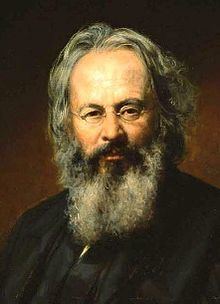 | ||
Born Orestes Augustus BrownsonSeptember 16, 1803Stockbridge, Vermont, United States ( 1803-09-16 ) Died April 17, 1876, Detroit, Michigan, United States Books The American Republic, New Views of Christiani, Charles Elwood: Or - the Infidel, Essays and Reviews - Chiefly o, The Mediatorial Life of Je Similar People Joseph de Maistre, Christopher Lasch, Karl Marx, Reinhold Niebuhr, Richard Hofstadter | ||
Saint simonism by orestes brownson 1853
Orestes Augustus Brownson (16 September 1803 – 17 April 1876) was a New England intellectual and activist, preacher, labor organizer, and noted Catholic convert and writer. Brownson was a publicist, a career which spanned his affiliation with the New England Transcendentalists through his subsequent conversion to Roman Catholicism.
Contents
- Saint simonism by orestes brownson 1853
- The journey home 2013 08 05 orestes brownson performed by kevin o brien
- Early years and education
- Religious unease
- Transcendentalism
- Conversion to Catholicism
- Legacy and criticism
- Family
- Works
- References
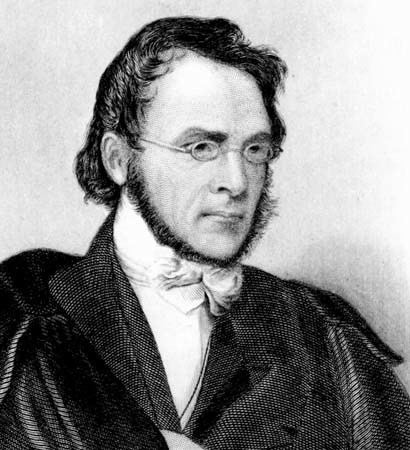
The journey home 2013 08 05 orestes brownson performed by kevin o brien
Early years and education
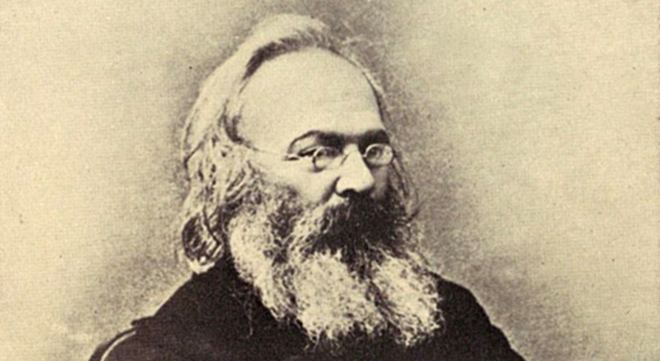
Brownson was born on September 16, 1803 to Sylvester Augustus Brownson and Relief Metcalf, who were farmers in Stockbridge, Vermont. Sylvester Brownson died when Orestes was young and Relief decided to give her son up to a nearby adoptive family when he was six years old. The family raised him under the strict confines of Calvinist Congregationalism on a small farm in Royalton, Vermont. He did not receive much schooling but he immensely enjoyed reading books. Among these were volumes by Homer and Locke and the Bible. In 1817, when he was fourteen, Orestes attended an academy briefly in New York. This was the extent of his formal education.
Religious unease
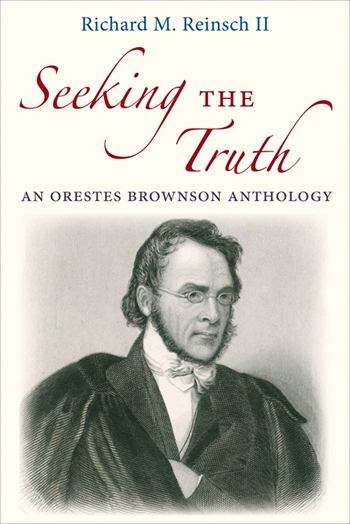
In 1822, Brownson was baptized in the Presbyterian Church in Ballston, New York but he quickly complained that Presbyterians only associated with themselves, and that the Reformed doctrines of predestination and eternal sin were too harsh. After withdrawing from Presbyterianism in 1824 and teaching at various schools in upstate New York and Detroit, Brownson applied to be a Universalist preacher. Universalism, for Orestes, represented the only liberal variety of Christianity he knew of. However, Universalism also did not quell his desire for religious understanding. He became the editor of a Universalist journal, Gospel Advocate and Impartial Investigator in which he wrote about his own religious doubt and criticized organized faiths and mysticism in religion. Later, rejecting Universalism, he became associated with Robert Dale Owen and Fanny Wright in New York City and supported the Workingmen's Party of New York. In 1831, he moved to Ithaca, New York, where he became the pastor of a Unitarian community. There, he began publishing the magazine the Philanthropist. In it, he could express his ideas outside of the pulpit since he thought of himself as a better journalist than preacher.
Transcendentalism
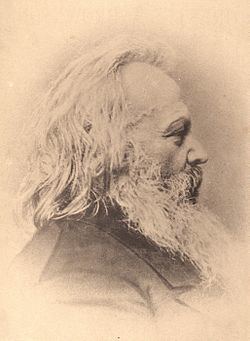
After the demise of the Philanthropist in 1832, Brownson moved to Walpole, New Hampshire where he was a part of the Transcendentalist movement which swept through the Boston Unitarian community. He read in English Romanticism and English and French reports on German Idealist philosophy, and was passionate about the work of Victor Cousin and Pierre Leroux. In 1836, the year of Emerson's Nature, Brownson participated in the founding of the Transcendental Club. In 1836, he moved to Chelsea, Massachusetts to set up his own church which he called "The Society for Christian Union and Progress" and published his first book, New Views of Christianity, Society, and the Church, which combined Transcendental religious views with radical social egalitarianism, angrily criticizing the unequal social distribution of wealth as un-Christian and unprincipled.
After President Martin Van Buren appointed George Bancroft as Collector of Customs at Boston in 1837, Bancroft in turn gave jobs to Brownson and to Nathaniel Hawthorne.
In 1838, he founded the Boston Quarterly Review, and served as its editor and main contributor for four years. Other contributors included George Bancroft, Margaret Fuller, George Ripley, and Elizabeth Peabody. Brownson originally offered use of the Boston Quarterly Review as the vehicle for the transcendentalists; they declined and instead created The Dial.
Brownson's writing contributions were political, intellectual, and religious essays. Among these was a review of Thomas Carlyle's Chartism, separately published as The Laboring Classes (1840), which caused considerable controversy. The article is sometimes blamed for causing Van Buren, whom Brownson avidly supported, to lose the 1840 election to William Henry Harrison. In fact, Van Buren himself is said to have "blamed [Brownson] as the main cause of his defeat," as The Boston Quarterly Review had recently promoted socialist ideas.
Also in 1840, Brownson published his semi-autobiographical work Charles Elwood; Or, The Infidel Converted. Through the protagonist, Brownson railed against organized religion and the truthfulness of the Bible. In 1842, Brownson ceased separate publication of the Boston Quarterly Review, and it was merged into The United States Magazine and Democratic Review, but his beliefs were once again evolving, and he found it necessary to break with the Review after a series of his essays created new scandal.
Conversion to Catholicism
In the spring of 1843, rumors spread that Brownson was considering converting to Catholicism, especially when he met with the Roman Catholic Bishop of Boston. He finally converted on October 20, 1844, his religion for the rest of his life. As a Catholic, Brownson became politically conservative. Brownson had started to believe, in contrast to his transcendentalist colleagues, in the inherent sinfulness of humanity, and additionally began to associate Protestantism with capitalist notions he disliked. He renounced the errors of his past including Transcendentalism and liberalism and wrote articles dedicated to converting America to Catholicism. He used his articles to strike out against his former friends in the Transcendental movement, who he wrote would be damned unless they converted as well. He succeeded in convincing Sophia Ripley, wife of George Ripley. However, he lost the respect of many of his correspondents. According to one scholar regarding his post-conversion work published in Brownson's Quarterly Review, "His liberal views frequently got Brownson into trouble, sometimes with the Catholic hierarchy." Brownson's newfound religious zeal caused him to be overly critical in defense of the Catholic Church. This resulted in letters from local Catholic journalists and even the bishop of his diocese requesting that he cease levelling such harsh criticisms.
Brownson had been writing many articles for the Paulist Fathers Catholic World publication. Brownson now saw Catholicism as the only religion that could restrain the undisciplined American citizens and thus ensure the success of democracy. To him, America was to be a model to the world, and the ideal model was a Catholic America. He repudiated his earlier Fourierist and Owenite ideas, now criticizing socialism and utopianism as vigorously as he had once promoted them. A staunch Douglas Democrat, Brownson, like Douglas, supported the Union in the Civil War and polemicized against the Confederacy and against Catholic clergy who endorsed secession. He avidly supported emancipation and even made several trips to Washington to discuss the importance of urgency in this matter with President Lincoln. He also encouraged all Americans, especially Catholics, to be patriots in the country’s time of turmoil.
After his conversion, he revived his former publication, now renamed Brownson's Quarterly Review, in 1844. From 1844 to 1864, Brownson maintained the Review as a Catholic journal of opinion, including many reviews of "inspirational novels" meant to encourage Catholic belief. In the 1853, he wrote a series of articles that claimed that the Church was supreme over the State. These writings caused a controversy among Catholic immigrants and the entire Catholic community in general. This controversy caused him to fall from ranks with American Catholic authority and bishops all over New England began condemning his writings. He became increasingly lonely as a result of his being shunned from Boston communities so he moved the Review and his family to New York in 1855, where he revived his interest in Catholic political philosophy. In 1860, he announced that the Catholic Church must progress towards a welcoming intellectual environment. He lapsed into a new form of liberalism that remained with him until his death, although this seems to be belied by an unambiguous repudiation of liberalism of which he expressed himself in his resuscitated Quarterly Review of 1873. In 1862, he was nominated for a Republican Congressional spot in third district of New Jersey but was met with failure that was blamed on his open Catholic views. In 1864, John Frémont, whom Brownson strongly supported, withdrew from the Presidential race. After these two defeats, Brownson’s declining health, spirit, and subscribers caused him to stop publishing the Review in 1864. The journal was relaunched again later in Brownson's life after a nearly ten-year hiatus, in 1873. The Review finally ceased publication in 1875, the year before Brownson's death.
In 1857 he wrote a memoir, The Convert; or, Leaves from My Experience.
Brownson died on April 17, 1876 in Detroit, aged 72. His remains were subsequently transferred to the crypt of the Basilica of the Sacred Heart at the University of Notre Dame, where his personal papers are also archived.
Legacy and criticism
Response to Orestes Brownson’s views was mixed during his lifetime, but not entirely negative. Brownson invited to New Orleans in 1855 by the publication Le Propagateur because he was viewed as a figure who both Protestants and Catholics could enjoy listening to, due to his multiple political and religious associations over the course of his lifetime. Various newspapers recorded contradictory opinions on his lectures, however, all praised his "eloquent" speech.
In 1850s, among his many intellectual contributions, in the midst of Irish and German immigration debate and related nativist moral panic, Brownson introduced the term Americanization into the public discourse while delivering a lecture, "Church and the Republic" at St. John’s College, future Fordham University. His attempts to harmonize ethnic immigrant identities with American democratic tradition without social and cultural homogenization are considered as an early move in the direction of multiculturalism. Brownson is often incorrectly credited with being the person to coin the term Odinism, referring to his 1848 "Letter to Protestants".
Brownson was summed up by poet and critic James Russell Lowell in his satirical A Fable for Critics as someone trying to bite off more than he could chew: "his mouth very full with attempting to gulp a Gregorian bull". Edgar Allan Poe refers to Brownson in his Autography series, calling him "an extraordinary man", though he "has not altogether succeeded in convincing himself of those important truths which he is so anxious to impress upon his readers." He is also mentioned in Poe's story "Mesmeric Revelation", referring to Brownson's 1840 novel Charles Eldwood; or, The Infidel Converted. While reviewing Brownson's biography penned by Arthur M. Schlesinger Jr., Henry Steele Commager noted that, "in his day Orestes Brownson was respected and feared as were few of his contemporaries; European philosophers regarded him with hope; American politicians enlisted his vitriolic pen; denominations competed for his eloquence; and when he listed himself among the three most profound men in America there were those who took him seriously."
Additionally, Brownson was held in high regards by many European intellectuals and theologians, including Auguste Joseph Alphonse Gratry, who called Brownson "the keenest critic of the 19th century, an indomitable logician, a disinterested lover of truth, a sage, as sharp as Aristotle, as lofty as Plato."
Family
Orestes's brother Oran Brownson joined The Church of Jesus Christ of Latter-day Saints about the same time Orestes became Catholic. One of Oran's main reasons for joining the LDS Church was its belief in authority. Brownson's son Henry F. Brownson published a three-volume biography of his father in 1900 and edited his collected works.
